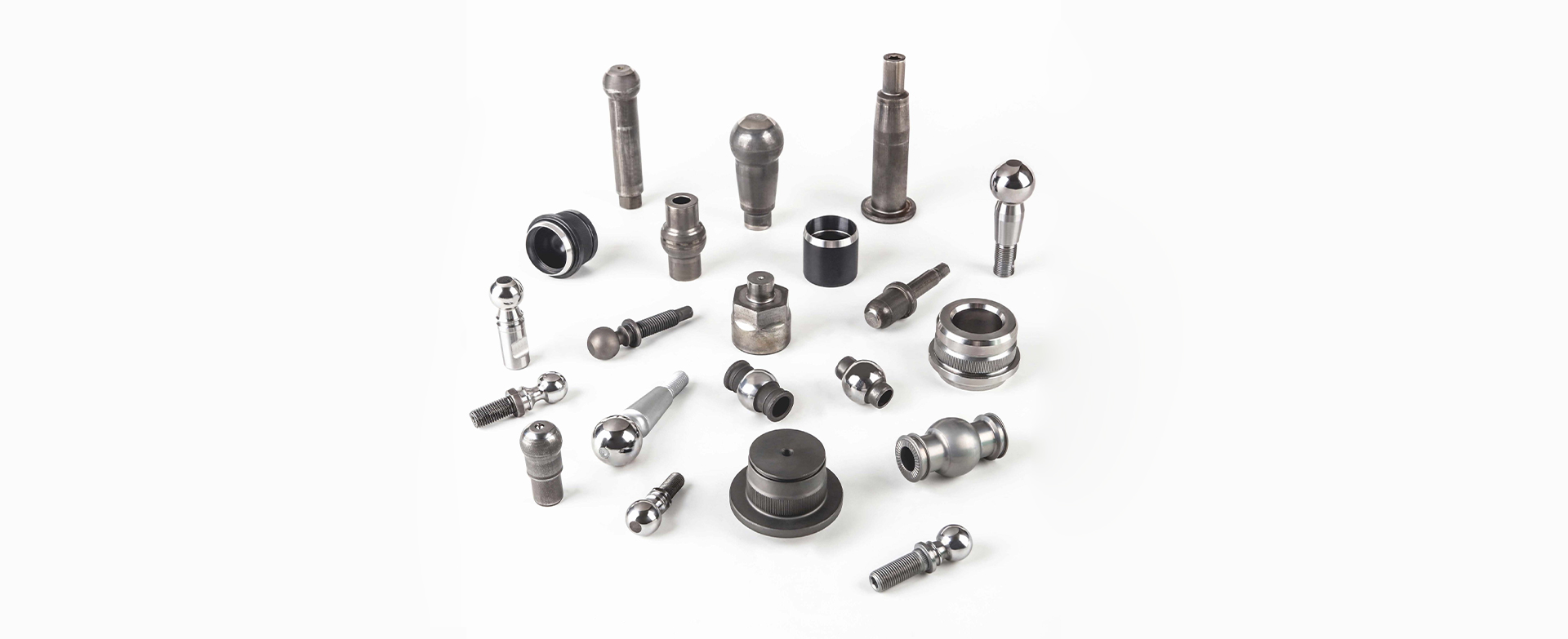| What is the structure of the ball pin? |
There are two main types of ball pin structures: one is the combination of ball pin and integral ball seat, and the other is the combination of hemispherical ball pin and ball. In the past, spiral springs were mainly used for pre compression and wear compensation structures. Nowadays, synthetic resin ball seats with elasticity and lubricity are widely used, which not only reduces costs but also improves handling stability. In addition, there have been significant improvements in the material and shape of the dust cover, as well as the type of lubricating grease, by eliminating the oil nozzle and achieving a maintenance free structure. The ball pin mainly consists of an end cover, ball pin, ball seat, and dust cover. The end caps are mostly made of steel stamping parts, mainly made of carbon steel, while some are made of aluminum alloy or ductile iron. The machining accuracy of the surface of the ball pin is relatively high, and alloy steel with good hardenability is often used. The surface of the ball pin that matches the metal ball needs to undergo surface hardening treatment such as high-frequency quenching to improve wear resistance. Nowadays, ball pins and non-metallic ball sockets are commonly used, so only the ball pins need to be quenched and tempered. The selection of ball joint pin diameter should be comprehensively considered based on factors such as tensile strength and durability. The all socket is made of surface hardened steel, powder metallurgy, nylon, acetal resin, polyurethane, and polyester elastomer. Due to the significant impact of the material and shape of the ball socket on wear and fatigue life, molybdenum disulfide or oil can be immersed in the material to improve wear resistance. Reinforcement ribs can also be added to the ball socket or composite materials can be used. The sealing performance of the dust cover has a significant impact on the wear and fatigue life of the ball head bolts. The material is mostly polyurethane or chloroprene rubber, which is resistant to high temperature, oil, and aging. In addition, the design should consider deformation during movement to prevent dust from entering the ball joint bolt from the mating surface after deformation. At the same time, the fitting accuracy of the dust cover and related components also has a significant impact on the sealing performance and service life. |
| Return back |

We have rich experience in production of ball pin
LEARN MORE
nut, bolt and wheel hub
wheel hub assembly.
We have rich experience in production of ball pin
LEARN MORE
nut, bolt and wheel hub
wheel hub assembly.
We have rich experience in production of ball pin
LEARN MORE
nut, bolt and wheel hub
wheel hub assembly.
We have rich experience in production of ball pin
LEARN MORE
nut, bolt and wheel hub
wheel hub assembly.
We have rich experience in production of ball pin
LEARN MORE
nut, bolt and wheel hub
wheel hub assembly.
We have rich experience in production of ball pin
LEARN MORE
nut, bolt and wheel hub
wheel hub assembly.
